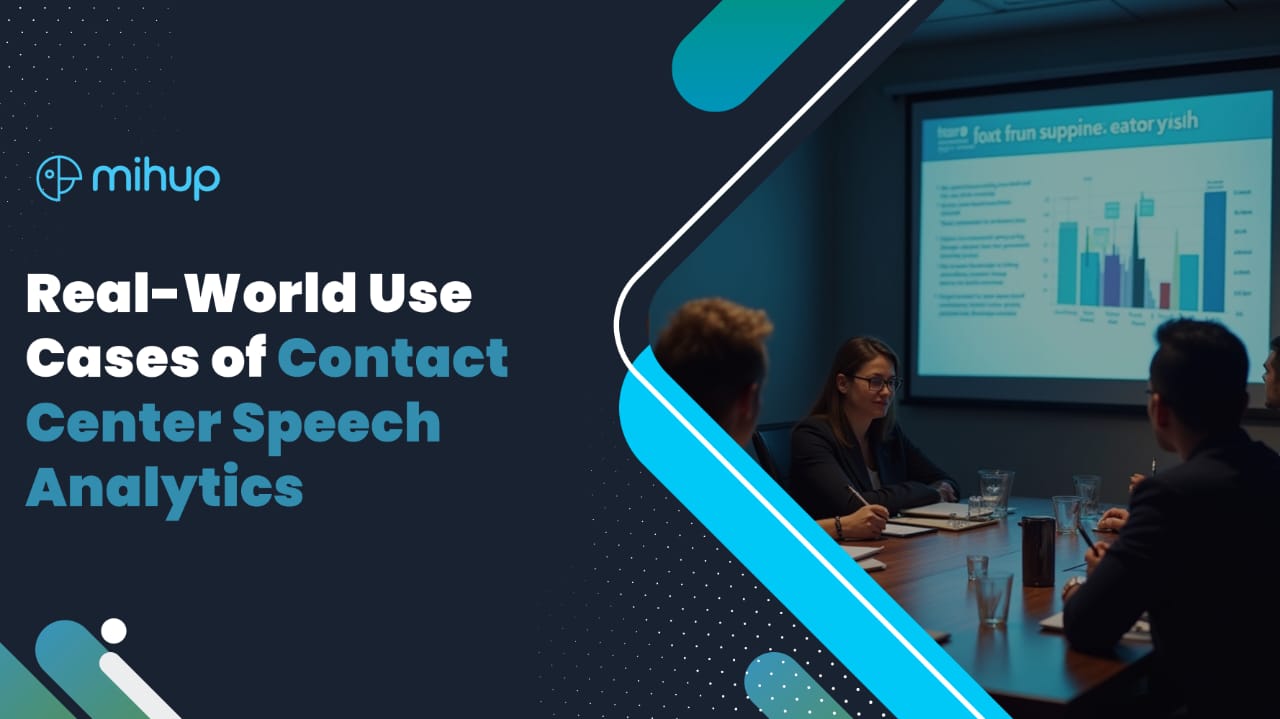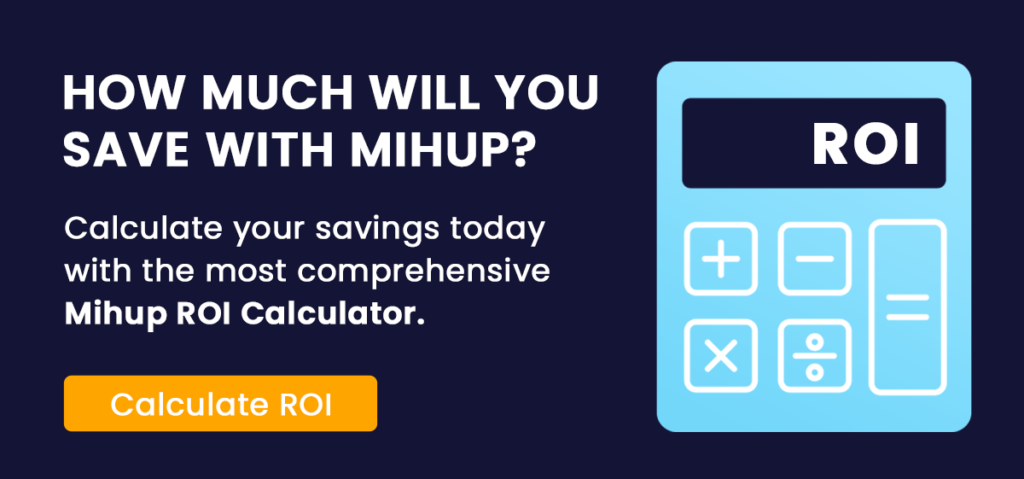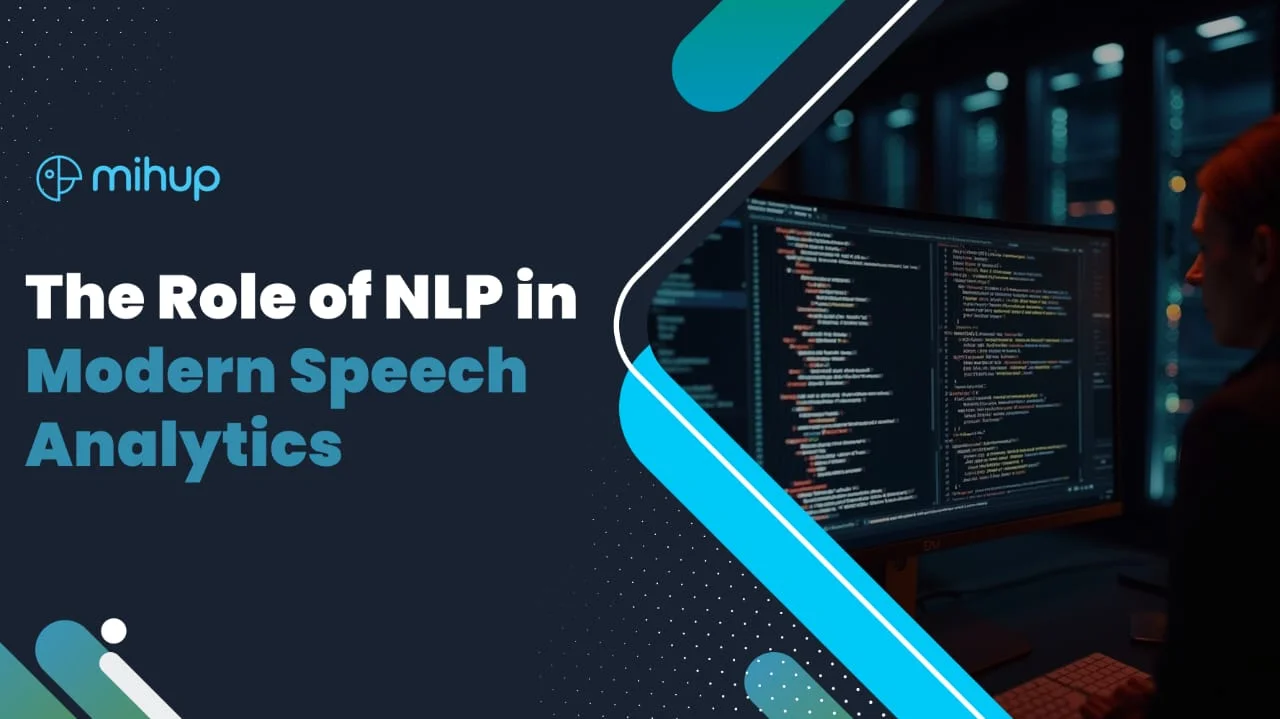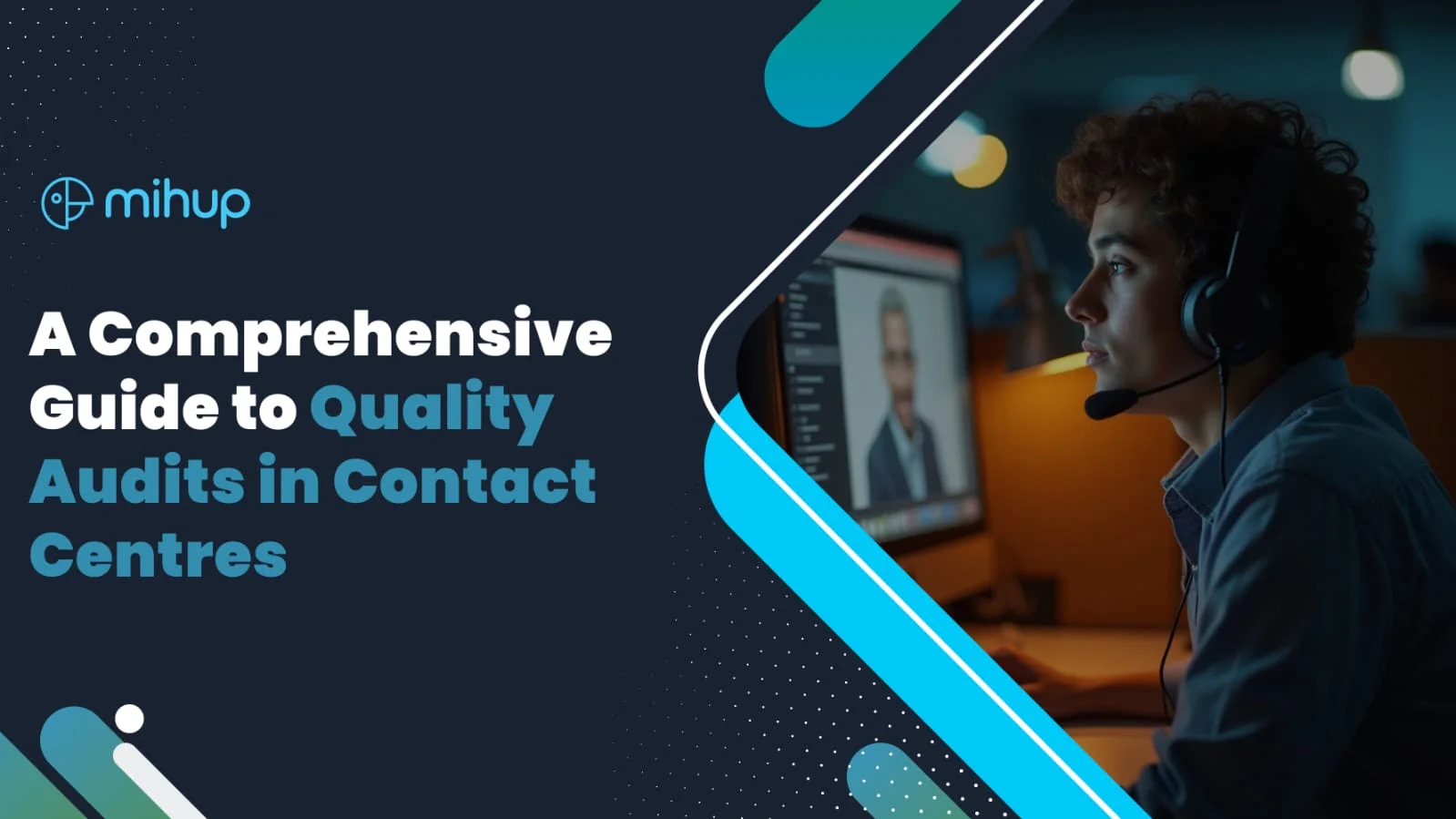In today’s competitive business landscape, the customer’s voice is no longer just a metric; it’s a strategic asset. For modern contact centers, speech analytics is fundamentally reshaping how businesses understand, serve, and ultimately retain their most crucial resource: their customers. This sophisticated technology moves beyond simple transcription, delving deep into the nuances of every spoken word to extract profound, actionable intelligence from each interaction.
This blog explores the compelling, real-world applications of speech analytics within contact centers. It illuminates how leading organizations are leveraging this technology not just to resolve existing problems, but to proactively innovate, drive continuous improvement, and secure their position as leaders in customer experience.
1. Elevating Customer Experience
The Challenge: Most contact centers traditionally rely on post-interaction surveys and feedback forms, capturing only a fraction of the overall customer experience. This leads to significant blind spots and delayed responses to emerging issues.
The Solution: Speech analytics, powered by advanced AI and Natural Language Processing (NLP), automatically analyzes 100% of voice interactions at scale. This comprehensive analysis instantly identifies real-time trends in customer satisfaction, detects escalating frustration, or pinpoints common areas of confusion—all without the delays of manual feedback. By meticulously parsing vocal tone, speech pace, and specific keyword usage, algorithms can identify at-risk customers, enabling proactive intervention.
In Practice: A leading telecom provider faced persistent high call volumes related to billing inquiries. By deploying speech analytics, they identified a recurring pattern of customer frustration stemming from ambiguous charges. With this precise insight, they redesigned their billing statements for greater clarity, directly leading to a remarkable 23% reduction in billing-related calls.
Business Impact:
- Boosted Customer Satisfaction (CSAT) & Net Promoter Score (NPS): Proactively addressing root causes of dissatisfaction.
- Reduced Call Volumes: Mitigating systemic issues to optimize resource allocation.
- Real-Time Crisis Aversion: Immediate alerts for escalating sentiment prevent churn and negative brand exposure.
2. Optimizing Agent Performance
The Challenge: Traditional Quality Assurance (QA) processes, heavily reliant on reviewing only a tiny sample of agent interactions, create substantial blind spots regarding actual agent behavior, consistent performance, and prevalent training gaps.
The Solution: With speech analytics, every single customer call can be objectively evaluated against predefined criteria. Automated scoring mechanisms assess metrics such as script adherence, demonstrated empathy, optimal talk-to-listen ratio, and effective keyword usage. This comprehensive analysis generates a wealth of objective data, facilitating highly personalized coaching programs tailored to individual agent needs and specific areas for improvement, replacing subjective guesswork.
In Practice: A major financial services firm used speech analytics to compare top-performing agents with average ones. Analysis revealed that successful agents consistently used “affirming language.” By developing targeted training based on this insight, the firm observed an impressive 18% improvement in first-call resolution (FCR) across trained teams.
Business Impact:
- Scalable, Objective Coaching: Data-driven insights for the entire agent pool.
- Enhanced Compliance & Consistency: Agents adhere to best practices and regulatory guidelines, minimizing service variations.
- Improved Agent Retention: Confident, well-coached agents experience higher job satisfaction.
3. Unlocking Revenue Intelligence
The Challenge: Valuable sales opportunities are frequently overlooked within routine customer service interactions because agents lack the tools or training to systematically identify subtle purchase intent cues.
The Solution: Speech analytics excels at meticulously scanning and analyzing conversations for specific upsell and cross-sell signals. This includes customer mentions of competitors, inquiries about pricing, expressions of dissatisfaction (creating an opportunity for a better offer), or questions about additional product features. By detecting these key phrases and conversational patterns, the platform can identify real-time sales triggers.
In Practice: An innovative e-commerce company implemented speech analytics to proactively identify customers discussing their refund policy during support calls. The system automatically flagged these interactions, routing them to a specialized retention team. This team, armed with call insights, offered tailored incentives, leading to a significant 27% jump in conversion rates for these at-risk customers.
Business Impact:
- Predictive Sales Insights: Identify potential conversions earlier in the customer journey.
- Refined Lead Scoring: Utilize conversational data to prioritize the warmest leads.
- Increased Customer Lifetime Value (CLV): Effectively convert opportunities and prevent churn.
4. Real-Time Sentiment Monitoring
The Challenge: The subtle, yet powerful, emotional tone and levels of customer frustration are notoriously difficult to quantify accurately through manual means. Yet, these emotional states profoundly impact customer loyalty and brand perception.
The Solution: Leveraging sophisticated NLP and advanced emotion-detection models, speech analytics platforms continuously monitor vocal tone, word choice, and conversational patterns to accurately assess customer sentiment in real time. This provides an immediate, quantifiable understanding of the customer’s emotional journey during a call.
In Practice: A major healthcare insurance provider noted rising frustration in calls about long wait times for specialist appointments. Real-time sentiment scores clearly indicated this trend, prompting the operations team to swiftly implement a system-wide scheduling update. This direct, data-informed intervention led to a remarkable 32% reduction in customer complaints related to appointment accessibility.
Business Impact:
- Instant De-escalation Support: Agents or supervisors receive immediate alerts for highly frustrated customers.
- Granular Customer Understanding: Gain insight into how emotions evolve during an interaction.
- Data-Driven Policy Adjustments: Guide effective changes to internal policies or customer-facing processes.
5. Ensuring Compliance
The Challenge: In heavily regulated sectors (e.g., financial services, healthcare), organizations face constant threats of substantial fines and reputational damage for non-compliance. Manual call audits are inherently limited in scope and cannot keep pace with the sheer volume of daily interactions.
The Solution: Speech analytics provides an automated and highly efficient solution for compliance monitoring. It can be configured to automatically detect the presence (or absence) of specific compliance-related phrases, keywords, or required disclosures within every single agent interaction. This ensures all conversations consistently adhere to both legal mandates and brand standards.
In Practice: A large financial institution sought to improve adherence to consumer protection regulations regarding credit product disclosures. They used speech analytics to automatically identify missing or unclear disclosures. After analyzing audit results, targeted retraining led to a significant 40% improvement in internal audit scores related to compliance.
Business Impact:
- Minimized Regulatory Risk: Proactive detection of non-compliant interactions dramatically reduces the likelihood of fines and legal repercussions.
- Audit-Ready Reporting: Provides comprehensive, automated documentation of compliance adherence.
- Early Issue Detection: Identifies emerging compliance risks or training needs before they escalate.
6. Driving Operational Efficiency
The Challenge: Many contact center inefficiencies remain hidden, manifesting as recurring bottlenecks, frustrating IVR navigation, or clumsy agent handoffs. These systemic issues inflate call volumes and operational costs.
The Solution: Speech analytics leverages sophisticated pattern recognition across thousands of calls to uncover these underlying pain points. The system automatically identifies recurring keywords or phrases like “transfer,” “long wait,” or “disconnected.” These patterns directly point to issues within workflows, IVR design, or agent training, even identifying specific knowledge gaps.
In Practice: An international airline noticed consistent customer escalations difficult to categorize. Speech analytics revealed most stemmed from frustration with a single, outdated FAQ page. Promptly updating this page led to a remarkable 15% drop in related support tickets, generating significant cost savings.
Business Impact:
- Significant Cost Reduction: Pinpoint and fix inefficiencies in workflows.
- Reduced Average Handle Time (AHT): Streamline processes for faster call resolution.
- Improved Self-Service: Identify pain points to enhance self-service channels, reducing inbound call volume.
7. Powering Product & Marketing Feedback
The Challenge: Gathering unbiased and comprehensive product feedback typically involves indirect methods like surveys or focus groups, which are often limited in scope, prone to bias, and introduce significant delays.
The Solution: Speech analytics directly taps into the unfiltered voice of the customer. It captures and categorizes customer language related to specific products and services in real time. Through thematic analysis and topic identification, the system automatically reveals emerging unmet needs, pinpointing confusing features or highlighting critical feature gaps directly from organic conversations.
In Practice: A rapidly growing Software-as-a-Service (SaaS) company detected repeated customer confusion around a new feature’s pricing via speech analytics. Calls frequently contained phrases like “I don’t understand the tiers.” Based on this unsolicited feedback, the company swiftly updated onboarding materials and redesigned its pricing page.
Business Impact:
- Accelerated Product Iteration: Direct, unfiltered customer feedback speeds up product refinement.
- Customer-Aligned Roadmap: Ensure product development and marketing align with true customer needs.
- Competitive Differentiation: Rapidly incorporate customer feedback to gain an edge.
Conclusion
Speech analytics is far more than just a contact center tool; it is a profound strategic enabler. By transforming vast quantities of unstructured voice data into highly structured, actionable insights, organizations gain an unprecedented ability to optimize every facet of the customer experience. This includes enhancing service delivery, driving more intelligent sales strategies, ensuring robust compliance, informing agile product development, and ultimately fostering deeper customer relationships.
In an era where customer loyalty hinges critically on the quality of their experience, businesses that possess the capability to listen better, understand more deeply, and act more decisively will undoubtedly emerge as leaders.
Explore how mihup.ai can unlock powerful insights for your business today!





